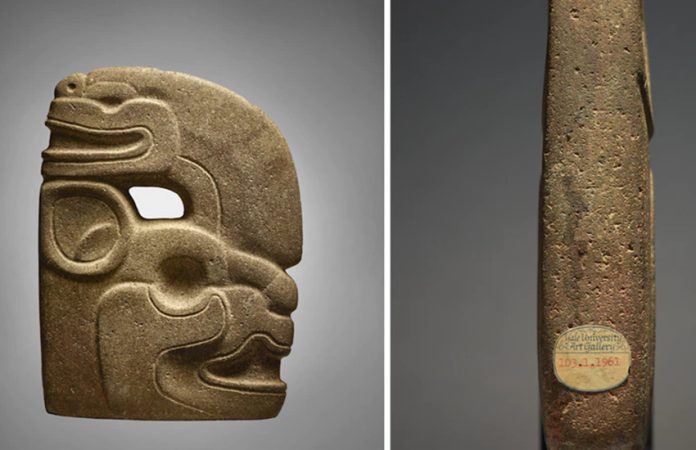Nineteen of 24 pre-Hispanic artifacts from Mexico were sold for a combined total of just under US $657,500 at a weeklong online auction in New York that concluded Tuesday.
Arguing that they are part of Mexico’s cultural history and should not be sold, Mexico’s National Institute of Anthropology and History (INAH) said last week that it would take legal action to try to stop the auction of pre-Hispanic artifacts by Sotheby’s New York auction house.
However, it was ultimately unable to stop the sale of masks, pottery vessels, and stone carvings from states such as Veracruz, Colima, Jalisco and Zacatecas.
Over half of the revenue from the sale of the Mexican artifacts came from the purchase of a Maya stone effigy, which sold for $352,800, well above its estimated selling price of $50,000 to $70,000.
Made between A.D. 550 and 950, the late classic period piece — an artifact related to the Mesoamerican ballgame that is believed to depict a bat, a jaguar and a serpent — was acquired by the Albright-Knox Art Gallery in Buffalo, New York, in 1944.
The auction house lists two previous owners — one in New York, the other in London — but doesn’t say when or under what conditions the artifact left Mexico.
Among the other Mexican pieces sold at the auction were an A.D. 250–450 Maya orangeware vessel of a waterbird, which went for $47,880; a 900–300 B.C. Olmec greenstone figure with a supernatural mask (also $47,880); a 100 B.C.–A.D. 250 Nayarit kneeling female figure; a 900–300 B.C. Olmec stone bird monster ($37,800); a bright-red 100 B.C.–A.D. 250 Veracruz stone Manopla — another ballgame accoutrement ($21,420); a 900–300 B.C. Olmec serpentine head ($9,450); a Jalisco figurine of a joined couple ($13,860); and a 1200–900 B.C. Tlatilco standing female figure ($10,710).
As is the case with the bat-jaguar-serpent effigy, the conditions under which the other pre-Hispanic artifacts left Mexico is unclear.
Mexico claims that many pre-Hispanic artifacts put on the block by foreign auction houses were looted from archaeological sites. It has also claimed that some items put up for sale in the past were fakes.
The federal government has previously attempted to stop auctions of pre-Hispanic artifacts in Paris but failed. Most recently, 27 of 33 Mexican pieces were sold in the French capital by the auction house Christie’s in February.
INAH has, however, recovered Mexican artifacts from other countries including Italy, Germany and the United States.
Source: El País (sp)
